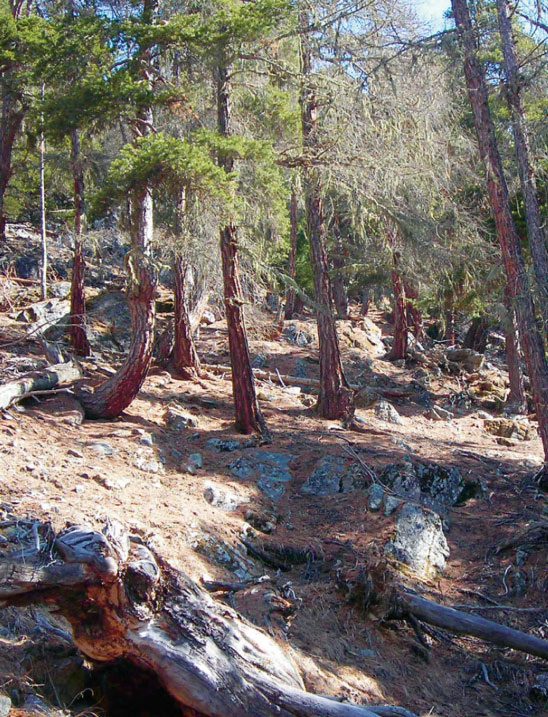Forests are particularly vulnerable to extreme events. Compared with the slow processes in the forest (growth, seed distribution, genetic adaptability, etc.), climate change threatens to occur at a rate that overwhelms natural adaptation processes. Important forest products and services such as protection against natural hazards could be reduced or disappear due to climate change. Alpine forest ecosystems are already affected from multiple climate-induced effects, e.g. higher tree mortality, more pest species calamities, higher water stress and greater forest fire frequency, thus reducing the role of forests to protect against rockfalls, landslides and avalanches. For example, major outbreaks of bark beetles were observed in protection forests in Switzerland, resulting from the Lothar winter storm in 1999 and the dry summer in 2003. Such outbreaks had never occurred at this altitude before.
As reported in the EEA report “Climate change, impacts and vulnerability in Europe”, the main climatic drivers affecting Alpine forests are: (i) an increase in temperature higher than the global average; from the late 19th century until the end of the 20th century, the Alpine region experienced a total annual mean temperature increase of about 2 °C, nearly twice the average in the northern hemisphere, (ii) an observed increase in annual precipitation in the north-west and a decrease in the south-east of the Alps, (iii) a pronounced variability in precipitation patterns (i.e. a decrease in seasonal precipitation during summer and increase in precipitation in winter in the north-west), as well as change in the intensity of extreme weather events.
A general shift in precipitation peaks from summer to winter is projected for most of the Alps, while the south and south-east will become significantly drier in all seasons. Moreover, an increase in the intensity and frequency of extreme weather events (heavy rainfall, drought periods, heat waves and possibly also storms) is expected in the whole Alpine region, leading to have the hydrological system of forests more sensitive to extreme weather events.
In addition, other than climate related hazards, such as gravitational mass movements (e.g. debris flows and landslides), torrential processes and floods, Alpine forests are highly susceptible to related climate effects, such as increased soil erosion, permafrost degradation and destabilization of mountain slopes. Extreme events, such as intense precipitation and storms, could then determine an increased risk of rock falls and landslide in such a degraded soil and with forest under stress conditions. This reduces the suitable areas for settlement, reinforcing the competition between the different forms of land use and directly affecting infrastructures for transport and energy distribution. Rockfall risk – from bits of gravel to fist-sized rocks which can penetrate a car roof – also requires to regularly clearing the carriageway. Marks on the asphalt and repaired areas also bear witness to such events. In the Fuorn Pass road in Engadin region in Switzerland, the potential initiation area in the massive fissured rock faces over the pass road extends from around 600 m to 2,100 m asl. The slope in this area partly exceeds 45 degrees.
Adaptation measures should reduce existing risks, increase adaptability through carefully planned regeneration of the forest species and reduce future risks. The fields of action identified include the critical protection of forests with a protective function in which there is a combination of insufficient regeneration (i.e. climate change occurs at a rate that overwhelms natural adaptation processes compared with the slow processes in the forest, such as plant growth, seed distribution, genetic adaptability, etc.) and reduced stability.



